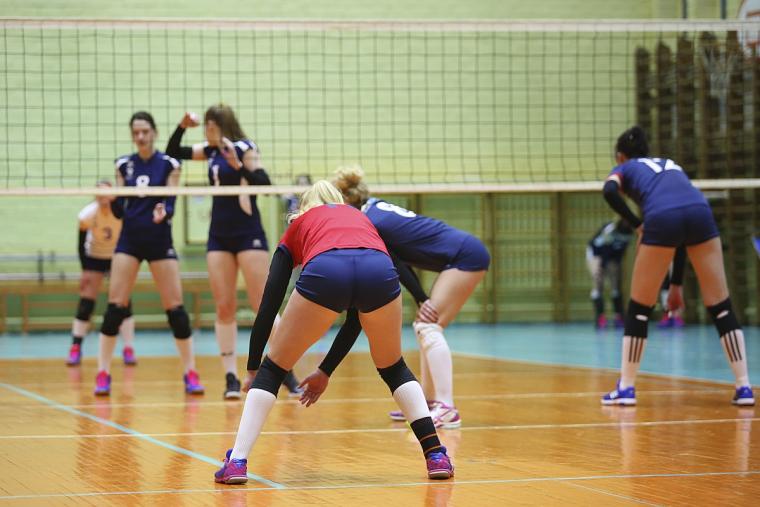
And you thought it was crazy that parents were taking second jobs and going into debt to pay for their children’s travel sports programs. Now, the latest trend among parents is redshirting children in order to give them a competitive edge in those same sports programs.
The practice, of having students repeat a year of middle or high school in order to mature physically and become a more dominant athlete, was inspired by a movement seen at a much lower level: holding children back from starting kindergarten in order to allow them to develop emotionally or mentally.
The term, redshirt, originated in the college sports scene, and refers to a college student-athlete who sits out of gameplay for a season while remaining eligible to compete in four years of college sports.
And it’s now becoming evident as students hit the preteen and teenage level: Coaches are noting an uptick in bigger, taller, stronger kids whose physical maturity and muscle mass are just advanced enough to give them an edge over others in their grade. The trend, also known as “reclassing,” has grown stronger over the past few years, and has picked up speed since the pandemic.
The online magazine, Parents, first noted the practice, stating, ”This surge is likely because promising athletes want to increase their odds of securing spots on select college teams and receiving generous sports scholarships. The media exposure from playing on high-profile college teams, which can lead to lucrative professional careers, may also be fueling the trend.”
High school coaches say for parents, it’s all about the end result.
"This is a bigger issue and bigger conversation than an isolated sport. This is about parents saying, 'What strategy can I use in order to get my child the best advantage possible?'" Frantz Pierre-Louis told Parents. Pierre-Louis is the father of two sons now playing Division I basketball, a former professional basketball player, and a basketball coach to legions of kids in New Jersey (some have gone on to play for the NBA). In other words, he has been there and seen that.
While the prospect of having a child be more likely to become a star player than a bench rider is tempting (and while even some coaches are recommending that parents hold their children back a year in order to accomplish it), school psychologists have been trying to caution parents about the inherent problems.
 “Yanking a kid away from all the friends he’s grown up with is dangerous,” noted an article in the Joplin Globe. “Nonprofit publisher Ed Week released research recently that said retaining a child at any grade level typically yields little or no positive effects, but retention can lead to academic boredom. It can also hurt their self-esteem.”
“Yanking a kid away from all the friends he’s grown up with is dangerous,” noted an article in the Joplin Globe. “Nonprofit publisher Ed Week released research recently that said retaining a child at any grade level typically yields little or no positive effects, but retention can lead to academic boredom. It can also hurt their self-esteem.”
Unfortunately, the phenomenon is new enough that many states have not developed policies about redshirting.
Expect that to change, say officials.
There are demographics at play, too, adds the website, Brookings: Children from more affluent homes, and/or with more educated parents are much more likely to be redshirted. White or Asian children are more likely to be redshirted compared to Black or Hispanic children, and boys are more likely to be redshirted than girls. Rates are also higher in private compared to public schools, and more likely to be seen in travel sports programs than in school programs.
Parents continue to seek loopholes in rules that could potentially lead to better recognition of their children, and as mentioned previously, are putting increasing amounts of money into their children’s sports programs in the hope of obtaining a college scholarship. This influx of funds was first covered in a survey conducted by The Harris Poll on behalf of TD Ameritrade.
But, said CBS News in 2012, only about two percent of high school athletes win those athletic scholarships every year at NCAA colleges and universities. And the average scholarship isn’t that much (about $11,000) which leaves a lot of money to be made up by parents. And the TD Ameritrade report found that from 2016 to 2019, the number of sports parents’ children who secured an athletic scholarship has declined by more than half (24 percent in 2016; 11 percent in 2019).
It hasn’t stopped parents from trying just about anything, though. After all, we have also seen parents trying to sue coaches in order to get their kids more playing time.
So, like it or not, the trend of redshirting continues to gather momentum, says Parents, who told the cautionary tale of Jenna Knapp of Des Moines, Iowa, who went with her 12-year-old son to an AAU basketball tournament in Indianapolis:
Knapp was shocked to see that many of the athletes were larger than her son. And not just by a little bit. "There was a huge difference," recalls Knapp. Curious as to why, Knapp approached some of the other parents. "That's when it was brought to my attention that it's pretty common now to reclass your child."
"In other words,"notes the Joplin Globe, "let your kid grow a year, and he or she will be the one scoring all the points, hitting homeruns, and spiking the volleyball down the younger, smaller players' throats."

